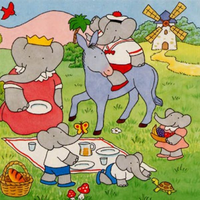- They better put something nice into that envelope - it seems unnecessarily expensive /s
- That’s not how you use € - it’s a unit of measurement. It belongs at the end like you would say it. That’s so American for something called france24
That’s not how you use €
The whole article is in English so it makes total sense to use it they way they did. The € sign doesn’t determine where it goes, the language does. In Dutch it would also be €10, not 10€.
2. That’s not how you use € - it’s a unit of measurement. It belongs at the end like you would say it. That’s so American for something called france24
According to the EU Interinstitutional Style Guide this is the correct way of doing it. http://publications.europa.eu/code/en/en-370303.htm#position
The default is for English because the document is in English, if you switch to another language the order below is reversed.
Position of the euro sign (€) in amounts
The euro sign is followed by the amount without space:
a sum of €30
NB: The same rule applies in Dutch, Irish and Maltese. In all other official EU languages the order is reversed; the amount is followed by a hard space and the euro sign:
une somme de 30 €
It’s the Americanization of Europe happening before your eyes
I don’t know if France24 is doing it because the US uses a leading currency symbol, but if so, we in the US obtained the convention of having a leading currency symbol from the British, so technically it’s the Europization of Europe.
I am kind of inclined to think that France24 isn’t doing it because it’s a US convention, as the date right below it is DD/MM/YYYY, while the US convention would be MM/DD/YYYY (and in my opinion, the world standard should probably be YYYY-MM-DD, but that’s another story).
Is it really Americanisation when several countries have been doing this for decades already? The Dutch even did it with their old currency (gulden), though it would be f 2,50 (with a space, and a fancier f than this one)
ƒancy




